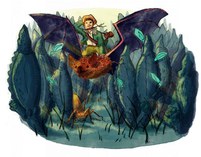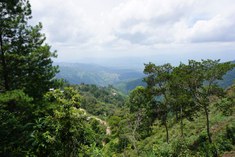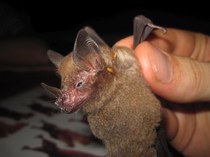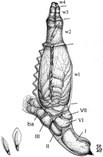Laboulbeniales fungi associated with ectoparasitic bat flies

Laboulbeniales are ectoparasitic fungi that associate with representatives of three subphyla of Arthropoda: Chelicerata, Myriapoda, and Hexapoda. Of the 2,325 described species of Laboulbeniales, about 80% are associated with Coleoptera and 10% with Diptera. The other species occur on many different host taxa, belonging to Arachnida, Diplopoda, and Hexapoda. Laboulbeniales are an exceptional group among the fungi because they do not grow hyphae. Instead, they form a three-dimensional thallus composed of true parenchyma as a result of determinate growth from a single bicellular ascospore. Four genera of Laboulbeniales have thus far been reported from bat flies (Nycteribiidae and Streblidae), which are ectoparasites themselves of bats (Chiroptera): Arthrorhynchus, Dimeromyces, Gloeandromyces, and Nycteromyces.
In this project that is funded by a Research Foundation–Flanders Junior Postdoctoral Fellowship, we are interested in ecological and life history traits that may affect infection of bat flies by Laboulbeniales. Does habitat destruction affect parasitism? How does parasitism change in bat species thriving in altered habitats relative to those species critically threatened or endangered? Do bat roosting habits affect parasite prevalence of Laboulbeniales on bat flies?
For this last question, we hypothesize that bats roosting in more permanent structures—such as tunnels and caves—have bat flies more heavily parasitized by Laboulbeniales fungi. It is known that bats respond to habitat modifications in different ways, such as behaviorally, at the physiological level, and in their ecosystem function provisioning, but also that responses are highly species and assemblage specific. It has also been demonstrated that habitat disturbance affects parasitism of bats by bat flies. If bat flies are affected by habitat disturbance, then Laboulbeniales could be affected as well. Elevated population densities of bat flies would potentially increase transmission success of ascospores, if they cooccur on the same bat hosts or in the same roosts.
Publications
Haelewaters D., Blackwell M., Pfister D.H. (2021). Laboulbeniomycetes: Intimate fungal associates of arthropods. Annual Review of Entomology 66, in press. https://doi.org/10.1146/annurev-ento-013020-013553
Liu J., Haelewaters D., Pfliegler W.P., Page R.A., Dick C.W., Aime M.C. (2020). A new species of Gloeandromyces from Ecuador and Panama revealed by morphology and phylogenetic reconstruction, with a discussion of secondary barcodes in Laboulbeniomycetes taxonomy. Mycologia 112(6), in press. https://doi.org/10.1080/00275514.2020.1781496


